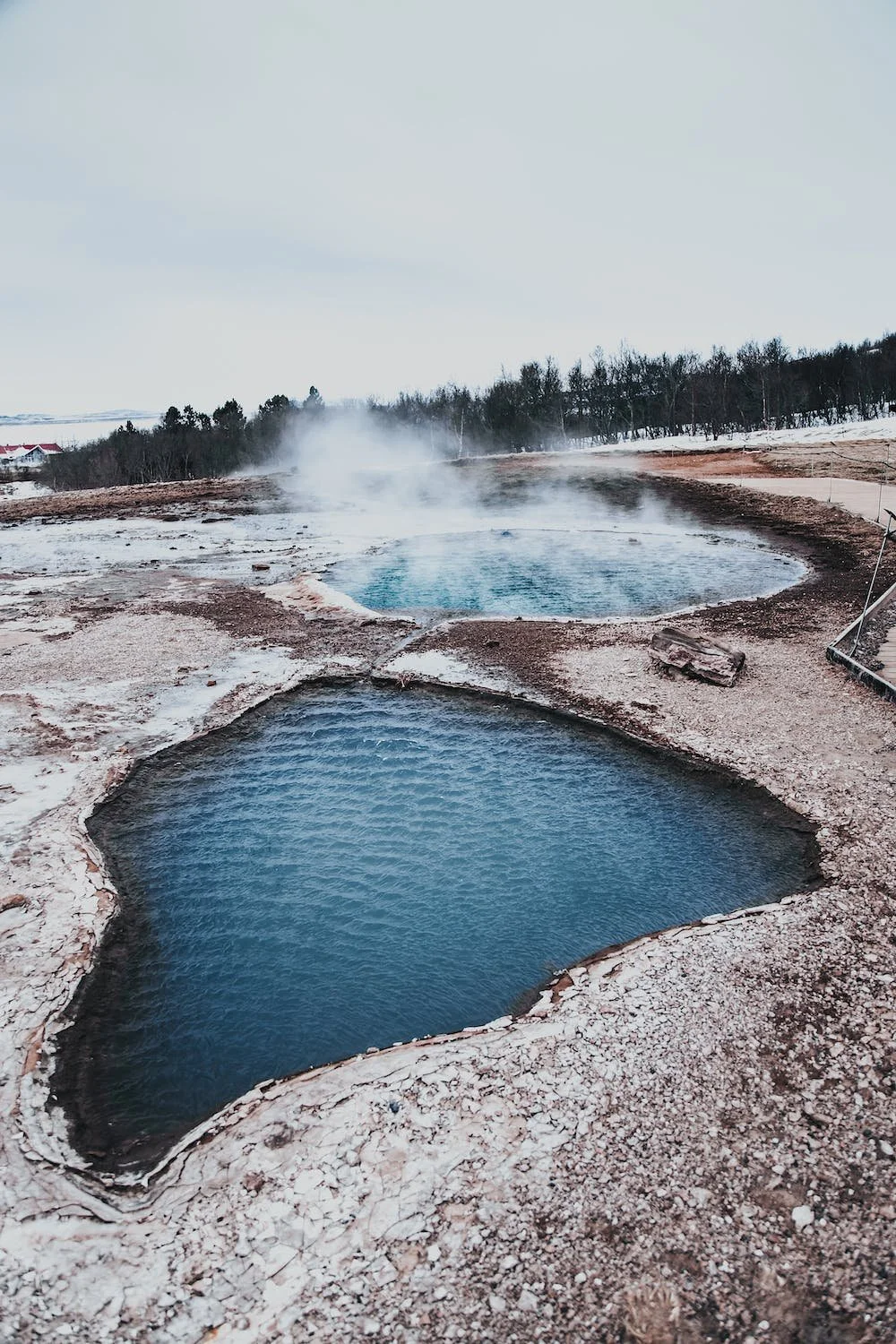by Aunjoli Das
Last summer, I had the opportunity to travel to Iceland on a Dialogue of Civilizations with Northeastern University. While camping under continuous sunlight for a month, we explored unique geological and glacial features around the country. We even got to see the Fagradalsfjall eruption! Iceland has a fascinating environment that makes it an ideal place to harness geothermal energy. We visited many geothermal power plants and learned about the mechanisms that produce electricity and heat homes. This experience led me to create a 3-part series on how Iceland was able to decarbonize its heating sector and transition to geothermal energy!
Before the 1970’s, the United Nations considered Iceland a developing country due to a lack of modern infrastructure, economic dependence on foreign nations, and widespread poverty. At the time, the Icelandic energy market was heavily dependent on imported fossil fuels. Today, nearly 100% of the country’s energy is derived from hydroelectric and geothermal sources, which makes it the largest green energy producer per capita globally! How did a country troubled by poverty, economic instability, and weak infrastructure develop one of the most successful zero-emission power grids in the world?
Iceland’s unique geologic and geographic conditions are what make the landscape ideal for geothermal energy production.
Geologically, Iceland is a very new country. The nation sits on top of a hot spot, which is a volcanic region that is fed by an anomalously hot mantle plume. Iceland is also bisected by a diverging tectonic plate boundary. This boundary is between the North American and Eurasian plates, which spread apart at the same rate our fingernails grow. Iceland’s unique geologic and geographic conditions are what make the landscape ideal for geothermal energy production. Groundwater beneath the earth’s surface is heated to over 100 degrees Celsius (212 Fahrenheit) by the active mantle plume, which is transported to an electricity-producing turbine powered by steam. The hot groundwater is also cooled down for household purposes such as bathing and cooking, while the excess heat is used to warm buildings and homes.
During the early 20th century, most of Iceland’s energy was sourced from British and Polish coal, while geothermal water was only used for bathing and laundry. This resulted in Iceland’s economy becoming heavily dependent on coal as an energy source for steam ships, fish processing plants, and heating. Farmers were the first to use geothermal heating to keep their farmhouses warm throughout the winter. The first successful attempts of using geothermal steam to heat houses were carried out in 1911. Finding geothermal heat sources was successful due to a cooperative effort between neighboring farmers, but this process was not easy to implement on an urban scale. The sparse population distribution paired with year-round cold temperatures created a large demand for district heating. Although hot springs in Reykjavík were already being used for bathing and laundry, the natural flow of these waterways could not heat the whole city. In the 1920’s, the city of Reykjavík began to drill wells to bring the hot water from deep underground up to the surface. At first, the city conducted extensive exploration drills with the same machines used to drill oil. These explorations were relatively unsuccessful, with a result of only 14 wells up to 250 meters deep that could only heat government buildings and a small number of residences. Soon, engineers found a much larger geothermal field, located in Reykir, 15 km east of Reykjavík. Drilling began in 1936 and ended in 1939, which exposed up to 300 liters per second of geothermal water, which had the capability to heat the entire city of Reykjavík! The hot water was transported to Reykjavík using a 15 km long pipeline that was insulated by turf covering. After years of refining pipeline infrastructure, the first construction of an urban geothermal heating system finished in 1944.
Fascinating stuff, no?! Our second installment of this series will be released soon, so stay tuned!
The Geothermal Exhibition at the Hellisheiði power plant educates visitors on how Iceland’s renewable energy system works. Image: Jen Stevenson Zepeda



